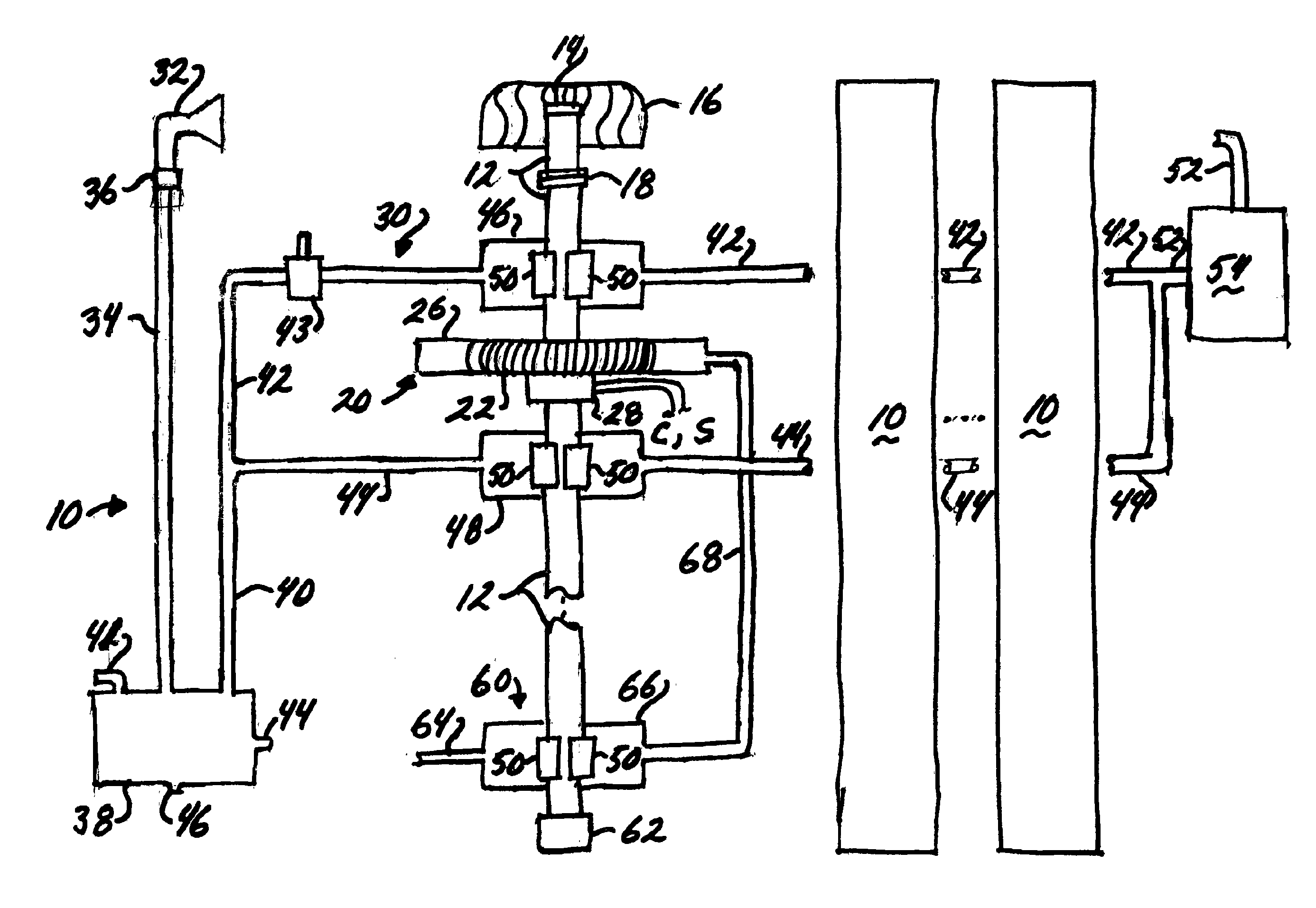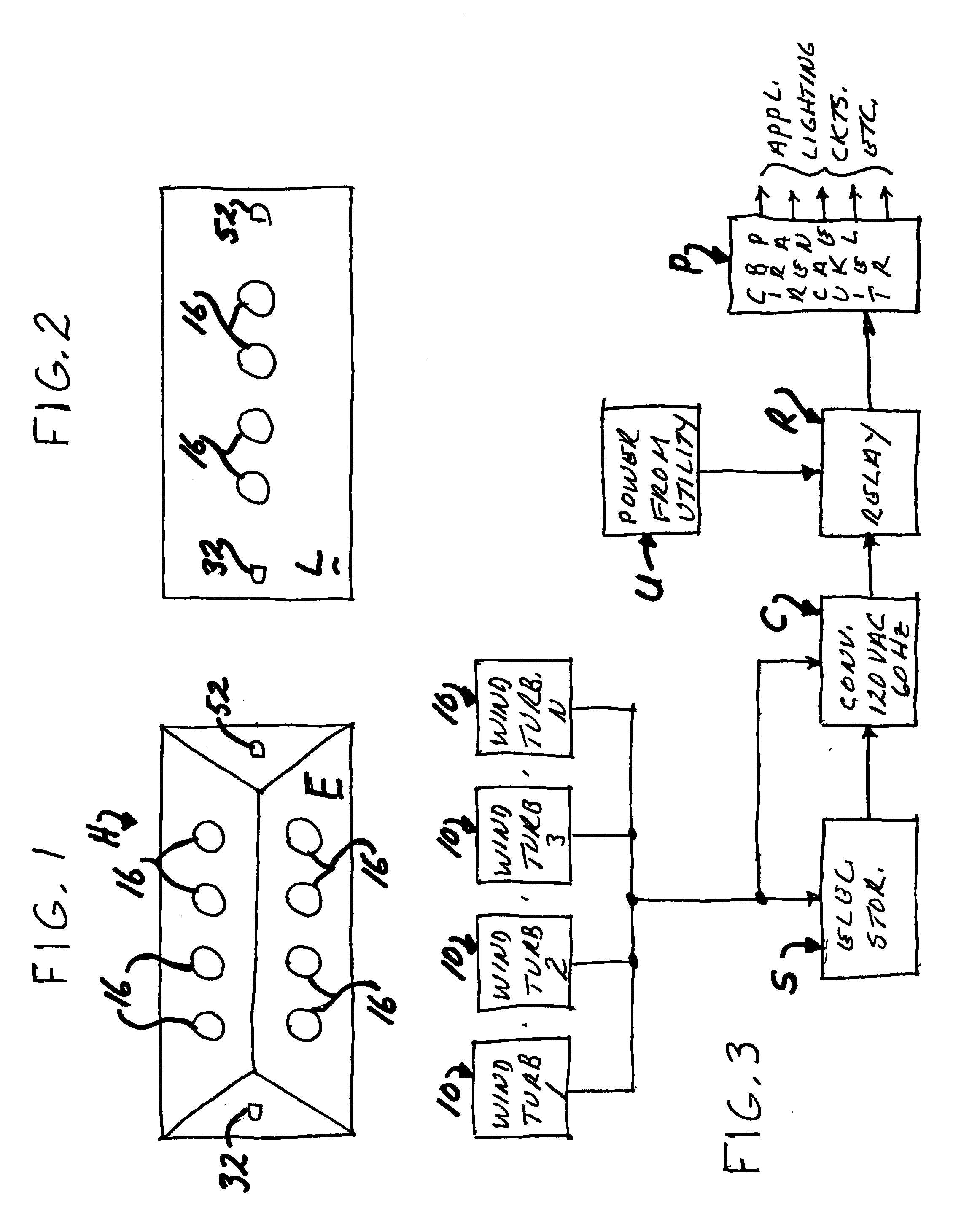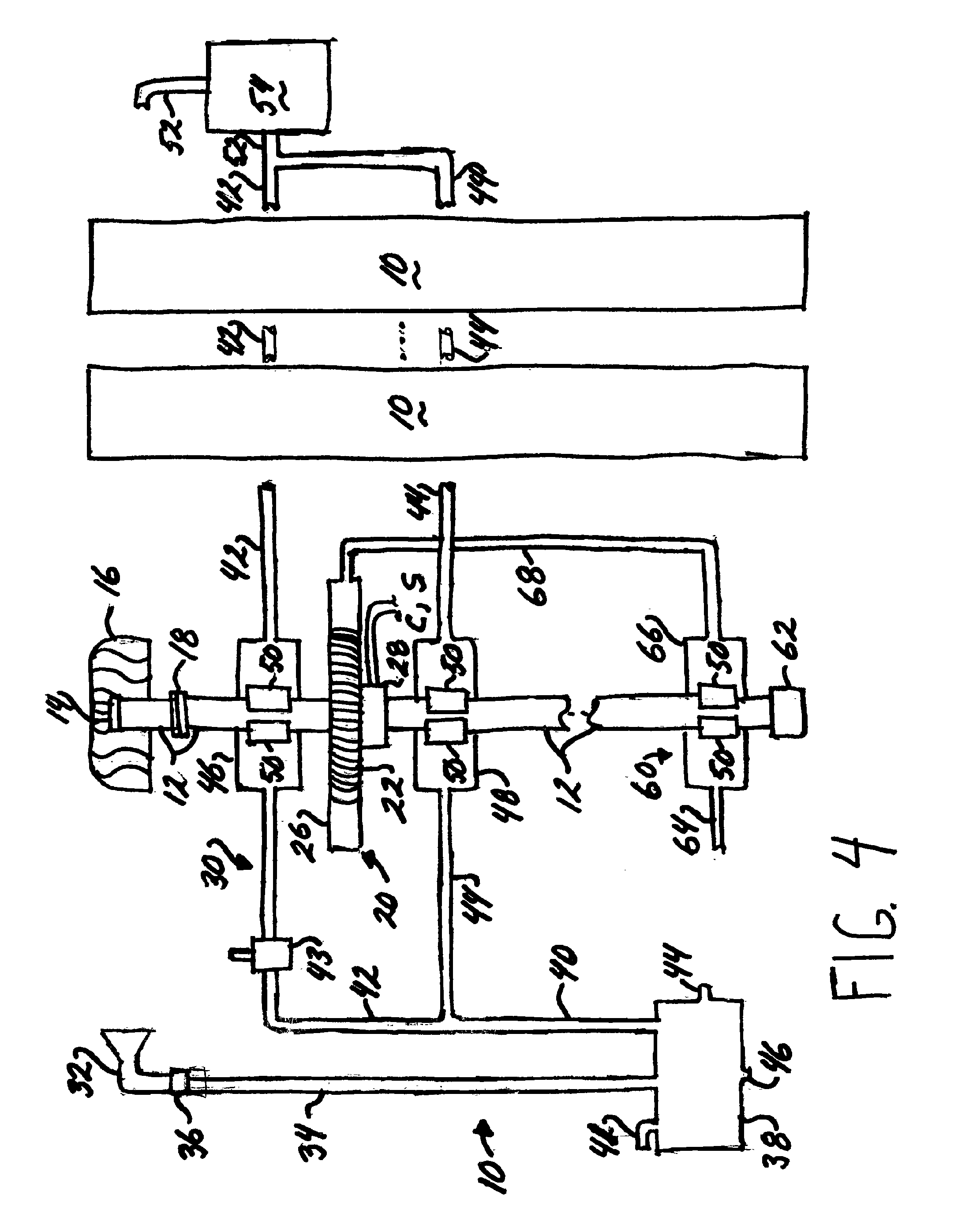Wind generator for installation on a house
- Summary
- Abstract
- Description
- Claims
- Application Information
AI Technical Summary
Benefits of technology
Problems solved by technology
Method used
Image
Examples
second embodiment
[0039]Referring now to FIG. 7, the wind turbine is indicated generally 100. Each turbine 100 includes a coupling 118 connecting an upper section of a shaft 112 connected to a housing 116, and a lower section of the shaft. As with the previously described embodiment, if the wind speed becomes so strong that damage may occur to either the shaft or the housing, coupling 118 disconnects the upper section of the shaft from the housing to prevent damage to the shaft. Again, when the wind speed abates coupling 118 reconnects the two sections of the shaft.
[0040]The electrical generator portion of wind turbine 100 is indicated generally 120 and includes a wire wound rotor 122 mounted on shaft 112 to rotate through an electromagnetic field established in conjunction with magnets housed in an assembly 126. The electric current is drawn off to converter C or storage unit S through a slip ring assembly 128. Again those skilled in the art will understand that the elements comprising electrical ge...
first embodiment
[0049]Finally, reciprocal air intakes 350 are installed about housing 330. These intakes draw air into the housing through a chamber 352 located at the surface of the water. Air drawn in through the intakes is directed to the magnet assembly within housing 330 for the same reasons as discussed with regard to the invention.
[0050]In view of the above, it will be seen that the several objects and advantages of the present disclosure have been achieved and other advantageous results have been obtained.
PUM
 Login to View More
Login to View More Abstract
Description
Claims
Application Information
 Login to View More
Login to View More - R&D
- Intellectual Property
- Life Sciences
- Materials
- Tech Scout
- Unparalleled Data Quality
- Higher Quality Content
- 60% Fewer Hallucinations
Browse by: Latest US Patents, China's latest patents, Technical Efficacy Thesaurus, Application Domain, Technology Topic, Popular Technical Reports.
© 2025 PatSnap. All rights reserved.Legal|Privacy policy|Modern Slavery Act Transparency Statement|Sitemap|About US| Contact US: help@patsnap.com



